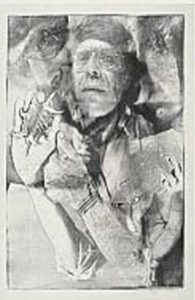Adventurous Approaches to Photography of the 1960s and 1970s on view at New Mexico Museum of Art

What defines a photograph? The dynamic new exhibition Transgressions and Amplifications: Mixed-Media Photography of the 1960s and 1970s showcases the work of mid-twentieth-century American artists exploring that question and responding with a range of images that may surprise, confound, or delight. Transgressions and Amplifications opens at New Mexico Museum of Art off the Santa Fe Plaza (107 W Palace Ave, Santa Fe, NM 87501) on July 23, 2022, running through January 8, 2023.
The exhibition includes more than 100 photographs, many from the museum’s collection, with significant loans from the University of New Mexico Art Museum in Albuquerque and additional pieces from the Center for Creative Photography, George Eastman Museum, Visual Studies Workshop, and other generous lenders.
“Transgressions and Amplifications offers a fascinating perspective on a relatively unsung aspect of the history of photography,” said the museum’s Executive Director Dr. Mark A. White. “The artists included in the exhibition helped to redefine what photography could be, and some of the examples in the show demonstrate just how daring their experimentation could be.”
At a time when the black-and-white camera image dominated the field of photography, a small cadre of American artists began developing new approaches to the medium that brought photography into conversation with other art forms.
“This exhibition might challenge your idea of what a photograph should be and what should be in a photograph,” said exhibition curator Katherine Ware. “Most of the images are not of something as much as they are about an experience.”
Some of these young artists revived old recipes for cyanotype or gum printing; others dared to pierce the pristine photographic surface with needle and thread; and a few tackled the project of creating three-dimensional prints and books. Another contingent brought commercial materials and emerging imaging techniques such as photocopying and verifax into the fine-art realm, or incorporated pop-culture references and craft traditions.
From its beginnings in the 1830s, photography encompassed a variety of forms and techniques, each supplanted in turn by a new technology. By the start of the 20th century, the black-and-white darkroom print dominated the field and became the benchmark for fine-art photography. In the 1960s and into the 1970s, against the backdrop of the Vietnam conflict and social justice movements, some American artists actively challenged that prevailing standard and turned to the history of photography, fine-art practices, and new developments in imaging technology to expand the physical and expressive boundaries of the medium.
Adventurous approaches to photography have been central to the New Mexico Museum of Art collection since the 1970s, when some of these innovators gravitated to the state, both independently and to teach or study at the University of New Mexico.
Local figures with work in the exhibition include Thomas F. Barrow, Betty Hahn, Jim Kraft, Jonathan Morse, Joyce Neimanas, Alex Traube, and Karen Truax. Other important figures, some of whom visited or lived briefly in the state, include Darryl Curran, Robert Fichter, Robert Heinecken, Joan Lyons, Duane Michals, Jerry McMillan, Bea Nettles, Robert Rauschenberg, Keith A. Smith, and Michael Stone.
This press release and all others distributed by the New Mexico Department of Cultural Affairs can be found here https://media.newmexicoculture.org/releases.
Image of Joan Lyons, Untitled (Nathan Lyons), 1974, offset lithograph from a Haloid Xerox transfer, 21 3/4 x 15 1/2 in., Photo by Blair Clark.


Connect